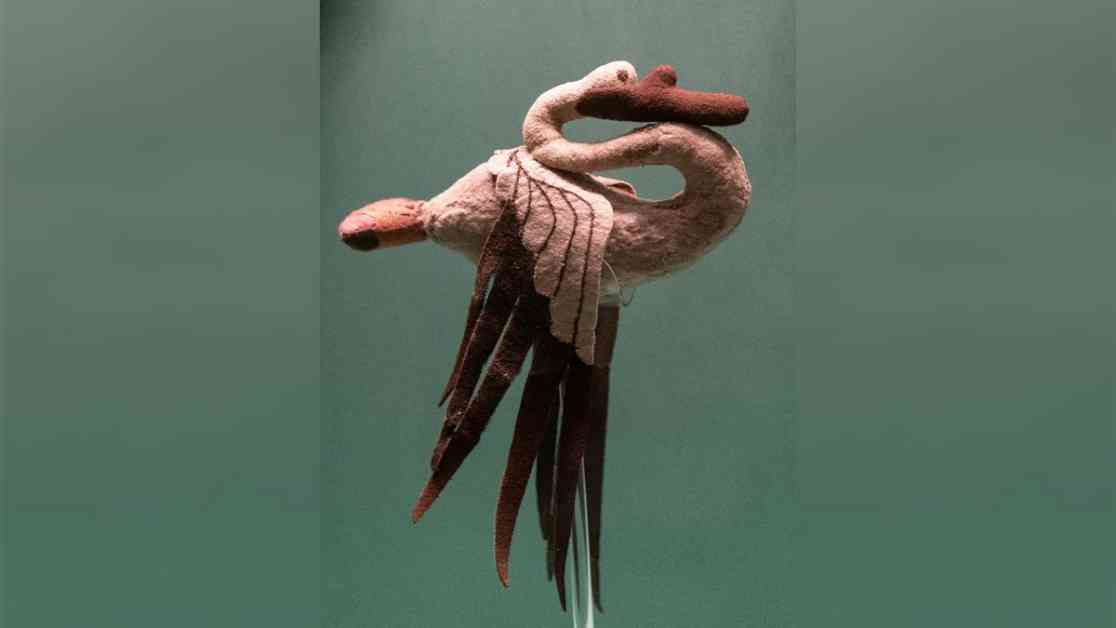In the ancient burial mounds of the Pazyryk Valley in the Altai Mountains of Russian Siberia, archaeologists unearthed a remarkable discovery: a plush swan crafted from reindeer wool. This ornamental figurine, dating back approximately 2,400 years to the Iron Age, offers a glimpse into the beliefs and culture of the Pazyryk people.
The swan, standing nearly 12 inches tall, is a testament to the craftsmanship and creativity of its makers. Made from white felted reindeer wool with black felt accents for the beak, eyes, and wings, this swan symbolizes life in three realms: air, land, and water. Its reddish-brown felt “feet” contain wooden sticks, suggesting it may have been mounted on a chariot or a tent-like structure.
Interestingly, the swan’s presence in the burial mound hints at a possible connection to creation myths. In various ancient cultures, water birds like swans, ducks, or geese were believed to play a role in the creation of the universe. This symbolic significance adds another layer of intrigue to the Pazyryk Swan and the beliefs of the people who crafted it.
Discovered by Soviet archaeologists in the mid-20th century, the Pazyryk Swan offers a window into the rich history of the region. The Altai Mountains, with their frozen burial mounds, have preserved not only artifacts like the plush swan but also organic materials, including human remains. This frozen landscape provides a unique opportunity for researchers to study the past and unravel the mysteries of ancient civilizations.
As we marvel at the intricate details of the Pazyryk Swan, we are reminded of the enduring legacy of the Pazyryk culture and their intricate craftsmanship. This plush figurine serves as a tangible link to a bygone era, where beliefs in the power of nature and creation myths shaped the worldview of ancient societies. Through careful analysis and interpretation, archaeologists continue to shed light on the past, allowing us to appreciate the beauty and significance of artifacts like the Pazyryk Swan.










